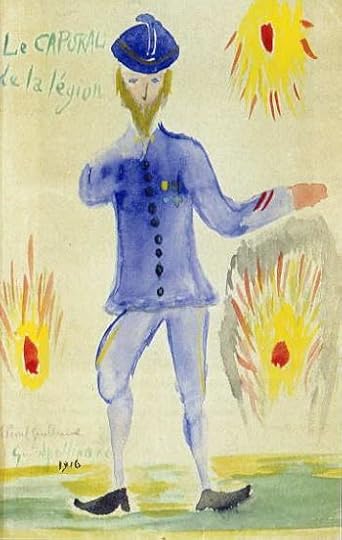Apollinaire, the painter's poet
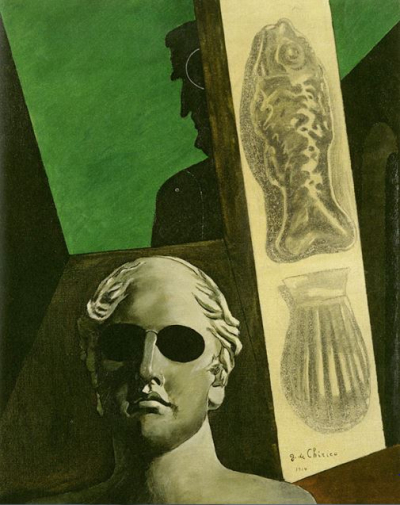
Giorgio De Chirico���s ���Premonitory Portrait of Guillaume Apollinaire��� (1914; oil and charcoal on canvas)
By ADRIAN TAHOURDIN
���J���ai tant aim�� les arts que je suis artilleur���, Apollinaire wrote in 1916 ��� I���ve so loved the arts that I���m an artilleryman (a pre-echo perhaps of the Killers��� line ���I got soul but I���m not a soldier���?)
Was there a twentieth-century poet more painted than Apollinaire? There are numerous portraits by Picasso ��� the two men met in 1905 and remained firm friends until the poet���s death at the age of thirty-eight from Spanish flu only a few days before the Armistice in November 1918. Picasso, who had provided a Cubist portrait of the poet for the frontispiece of his collection Alcools (1913), was said to be grief-stricken.
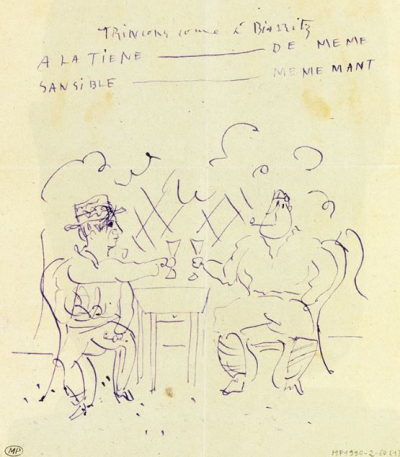
Picasso: ���Picasso and Apollinaire clinking glasses��� ��� drawing on a letter Picasso sent to the poet in the summer of 1918
A recent exhibition at the Mus��e de l���Orangerie in Paris, Apollinaire: Le regard du po��te, focused on the poet���s fruitful relationships with his artistic peers, and his serious engagement with the art of his time, championing the work of Douanier Rousseau, for example ��� Paris was unquestionably the world capital of art at the time. Apart from work by Picasso, on display were portraits by Giorgio De Chirico (before his return to Italy to sign up), Francis Picabia, Sonia Delaunay, Marc Chagall, Robert Delaunay, Jean Metzinger, Louis Marcoussis (the comical ���Apollinaire in Prison��� in the wake of the Mona Lisa episode in 1911), Marie Laurencin (including the wonderful ���Group of Artists��� of 1908, which also features Picasso, Laurencin herself, and Picasso���s companion Fernande Olivier), Marcel Duchamp and Henri Matisse (an eye-catching charcoal work dated 1944). Raoul Dufy, meanwhile, had provided woodcuts for Apollinaire���s collection Le Bestiaire (1911).
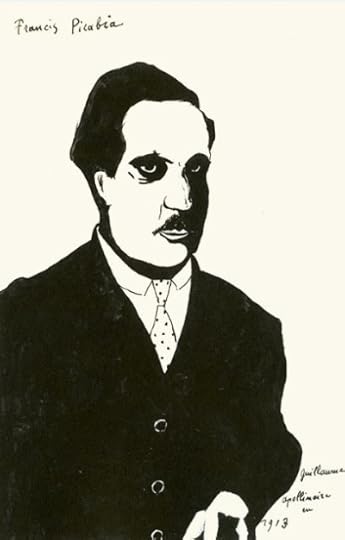
Francis Picabia: Apollinaire in 1913
Added to which were numerous works Apollinaire had written about or championed in the Soir��es de Paris magazine, which he co-founded in 1912. Then there is his interest in the circus, in cinema (Louis Feuillade's poster image of Fant��mas massively straddling the rooftops of Paris). And not least was the interest he shared with Picasso in ���art n��gre��� or ���primitive��� art, which he fed by visiting the Trocad��ro museum. (The museum closed in 1935, but in its stead Paris now boasts the superb museum at the Quai Branly, which displays the indigenous art and cultures of Africa, Asia, the Americas and Oceania; it was opened, somewhat surprisingly, by President Jacques Chirac, and has recently celebrated its tenth anniversary.)
To coincide with the exhibition, Gallimard published an edition of the mostly unpublished correspondence between him and the art dealer Paul Guillaume (some 120 letters, the majority from Guillaume to Apollinaire). The work has been meticulously edited by the TLS contributor Peter Read. Apollinaire and Guillaume met in 1911 when the latter was just nineteen. Within ten years he had become ���one of the most influential and enlightened art dealers of his time���. As Read and Laurence Campa write in their introduction, the two men, ���in spite of their differences, . . . collaborated . . . in a magnificent series of exhibitions, events and publications���.
Guillaume is often ��� it has to be said ��� demanding, disappointed at the poet���s non-appearance. (Apollinaire���s own first letter to the art dealer is no. 17 in the correspondence: ���Received from Mister PAUL GUILLAUME the sum of TEN francs for the publicity in the June issue of SOIR��ES de PARIS���.) By 1915 the poet has signed up and is at the front, where, as contact man, he rides around on a horse behind the lines. In May of that year he writes to Guillaume from the front to thank him for cigars. ���Here it���s always the same, combats in which we don���t see the enemy, we sense him, we see the shells that he sends over and during the night the rockets light up the front, the searchlights . . . . It���s enchanting��� (these experiences were worked into his poetry). Guillaume replies to reveal that he has become ���Plenipotentiary of modern art in Paris���. He offers no specific comment on the poet���s report from the front beyond a request for ���frequent news��� as it gives him ���the greatest pleasure���. By September Guillaume is wondering ���what has become of [him]?��� He���s heard that he may have been promoted to sergeant, but as he���s not certain he decides not to address him thus on his envelope. (Apollinaire, meanwhile, refers to Germany as ���Bocherie���.)
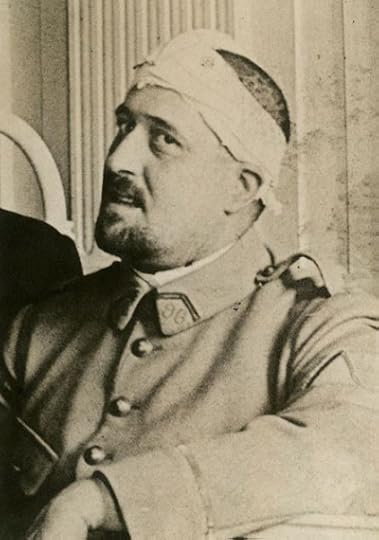
(Attributed to) Serge F��rat, after a photograph taken at the H��pital italien on the quai d���Orsay (1916)
In May 1916 following a head wound received at the front the poet undergoes a trepanning (curiously Read gives the date as May 1915 in a note). During his convalescence Apollinaire paints the wonderful watercolour ���Le Caporal de la l��gion", a portrait of the poet and adventurer Blaise Cendrars, who had himself lost an arm in the conflict (below).
Paul Guillaume kept his poet busy. In January 1918 he commissioned Apollinaire (who was bed-ridden with a chest infection) to write the preface to a catalogue of an imminent Picasso/Matisse exhibition. The poet delivered an eloquent text. In May 1918, meanwhile, Picasso was a witness at Apollinaire���s wedding to Jacqueline Kolb and gave them ���L���Homme �� la guitare��� which took pride of place on the walls of their apartment on the Boulevard Saint-Germain. Sadly, the last letter from the poet to Paul Guillaume included here, dated October 11, 1918, accuses its recipient of loutish behaviour ��� "Votre conduite vis-��-vis de moi est celle d'un fort grand voyou". Within a month Apollinaire would be dead.
Related articles
 The Marquis de Sade 200 years on
The Marquis de Sade 200 years on
Peter Stothard's Blog
- Peter Stothard's profile
- 30 followers


